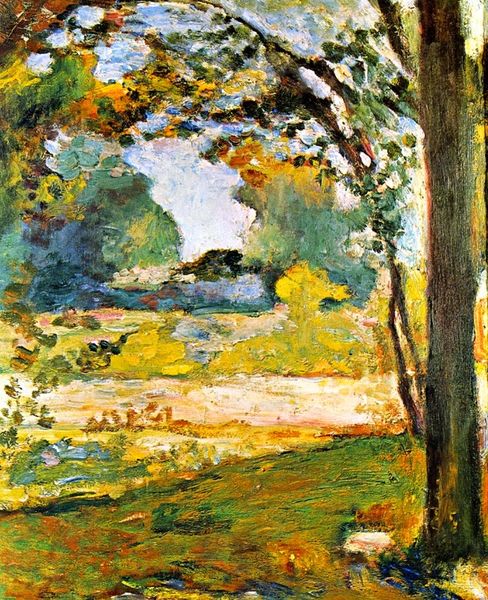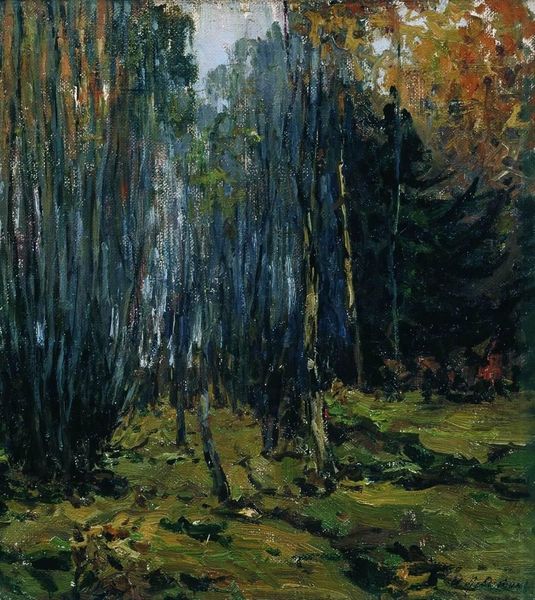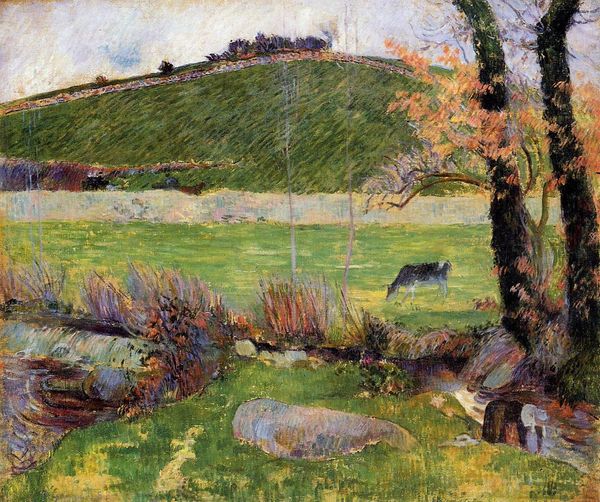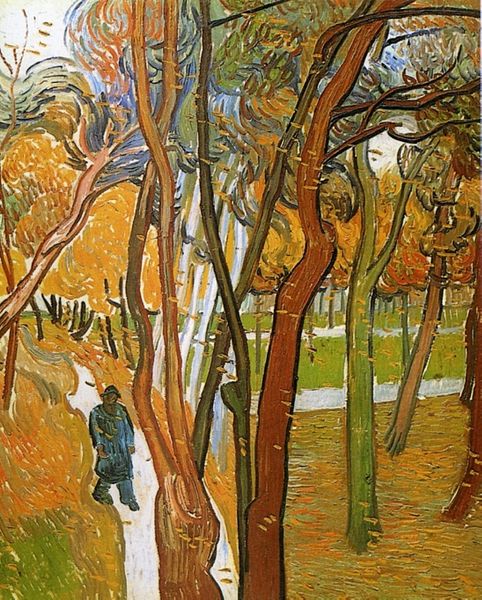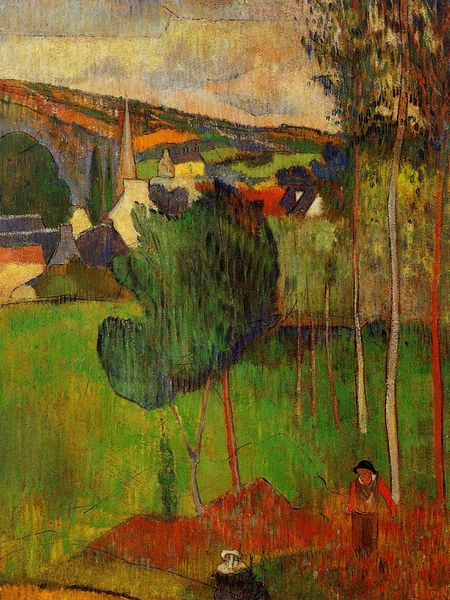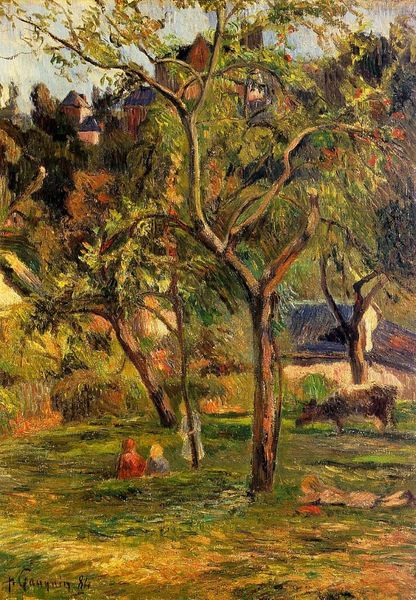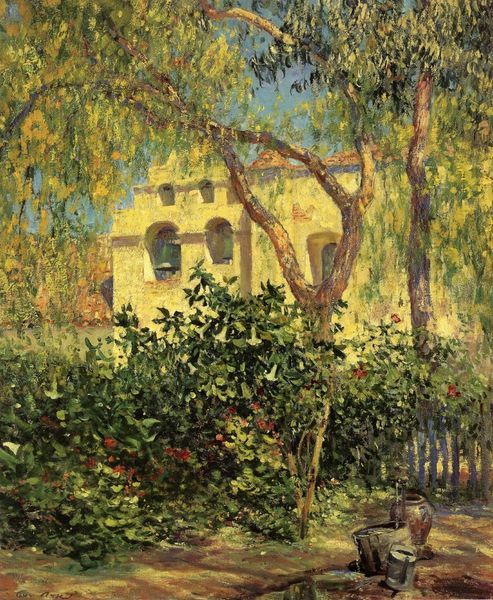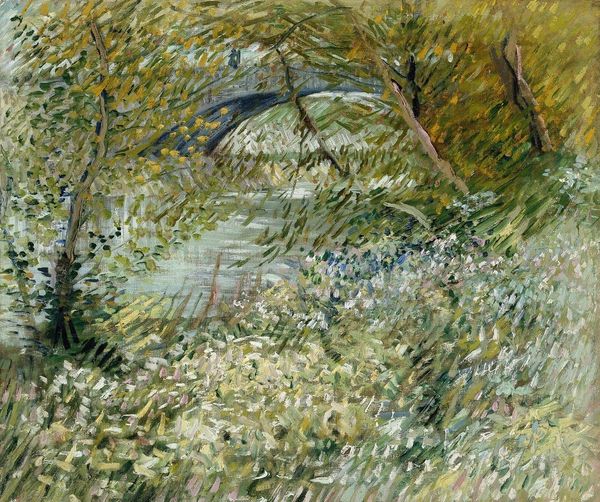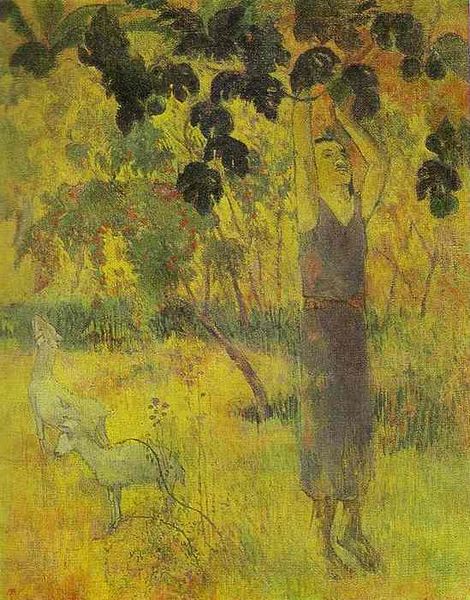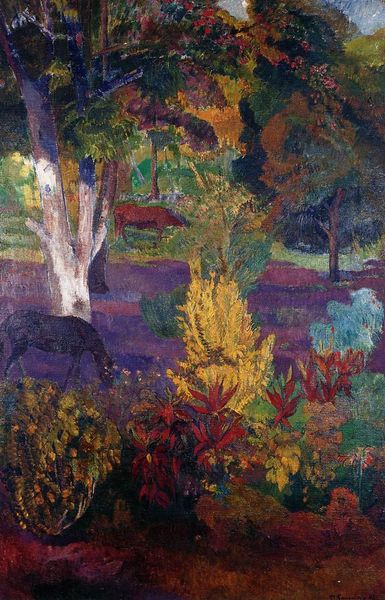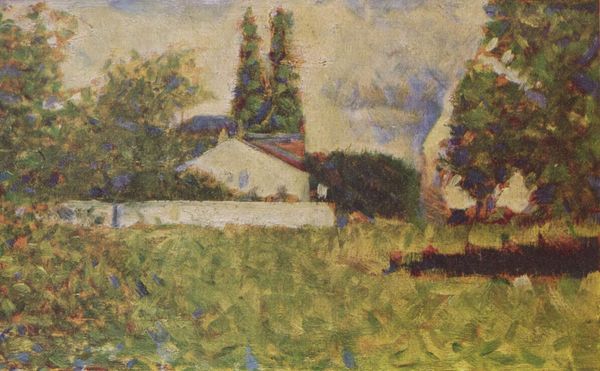
painting, oil-paint
#
tree
#
animal
#
rural-area
#
painting
#
grass
#
oil-paint
#
landscape
#
figuration
#
nature
#
oil painting
#
symbolism
#
post-impressionism
Copyright: Public domain
Paul Gauguin's 'Shepherd and Shepherdess in a Meadow', whereabouts unknown, presents a seemingly idyllic pastoral scene. But this undated painting speaks volumes about the cultural anxieties of late 19th-century France. The figures, rendered with a deliberate lack of detail, appear dwarfed by the landscape, suggesting a tension between humanity and nature, and perhaps a critique of urbanisation. Gauguin, like many artists of his time, was invested in primitivism, a movement which looked outside the industrialised West for artistic inspiration. The choice of subject matter, shepherds, evokes a romanticised vision of rural life. But does the painting celebrate or critique this vision? To truly understand this work, we need to consider the institutional context. Gauguin, initially associated with Impressionism, distanced himself from the Parisian art scene in search of a more authentic mode of expression. Art history can reveal these tensions, helping us to understand the complex social and cultural forces that shaped the artist's vision.
Comments
No comments
Be the first to comment and join the conversation on the ultimate creative platform.

